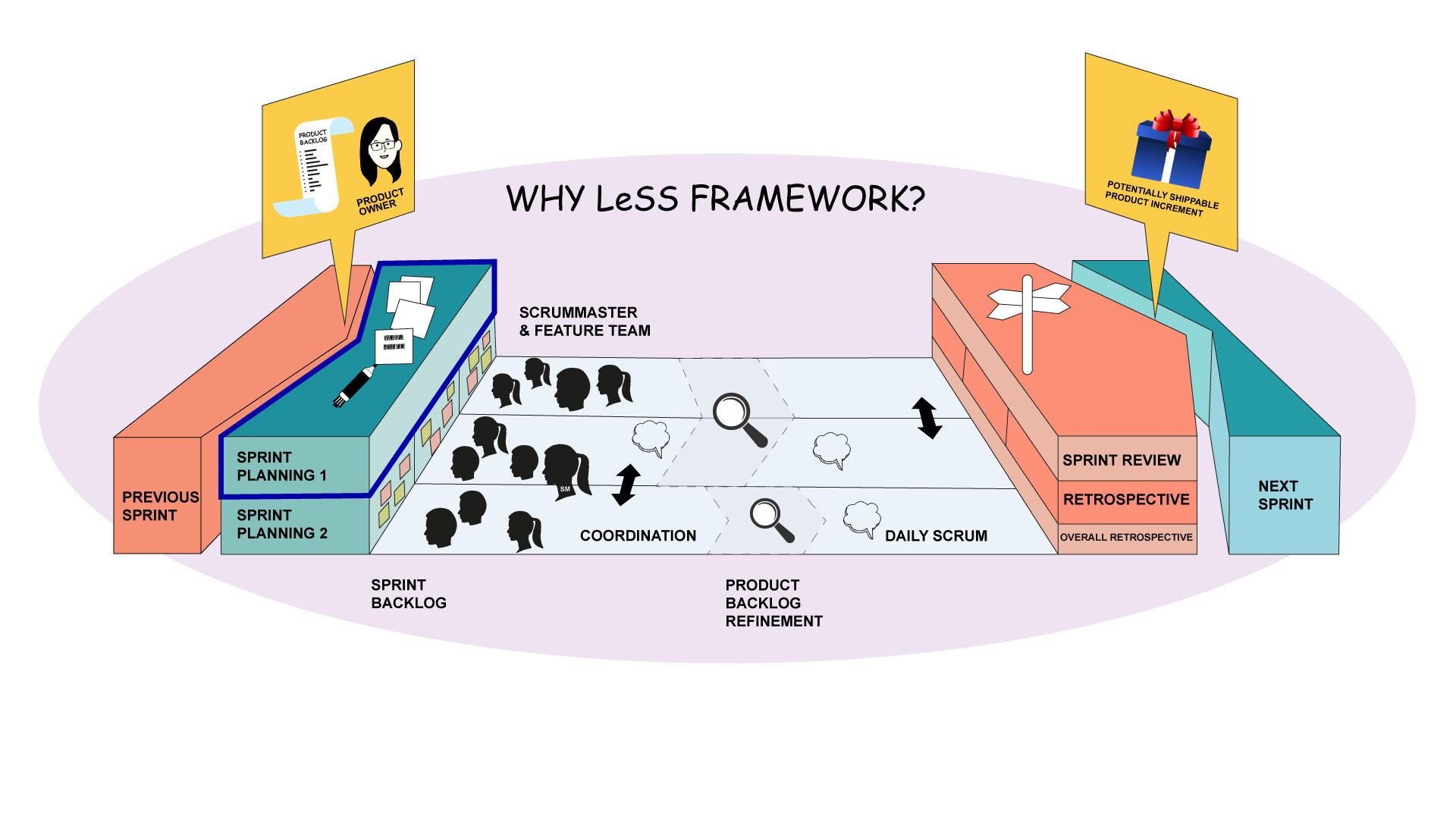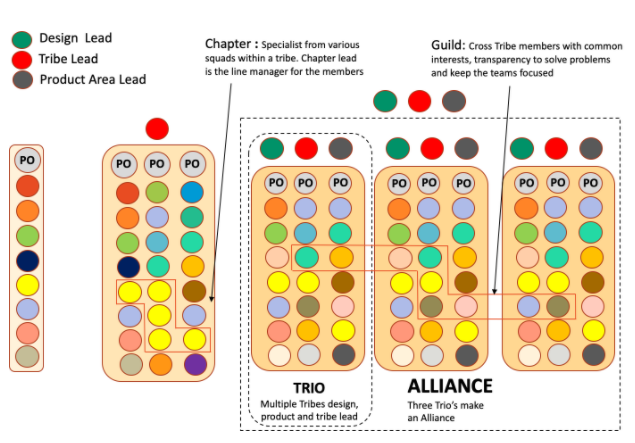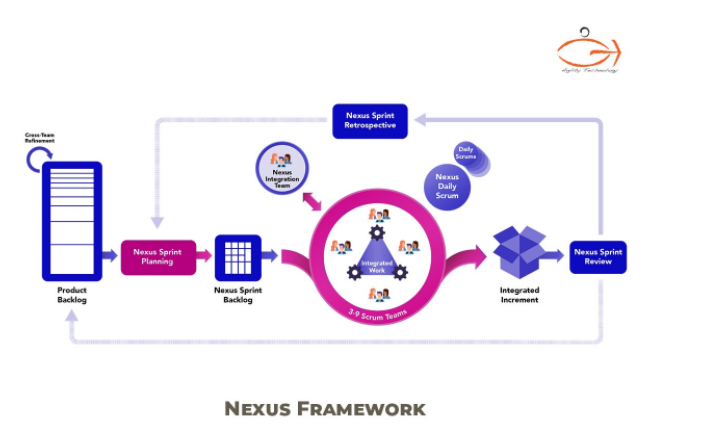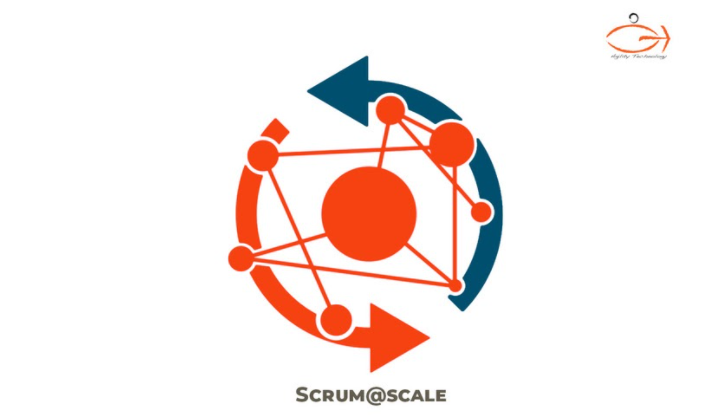

Scaling scrum basically means to successfully apply scrum framework on medium to large scale projects. But scaling scrum is not just a cakewalk. If you have really decided to scale scrum then below are the 6 frameworks that can be utilized to do the task:
LeSS stands for Large Scale Scrum. It stays closest to Scrum’s purpose and therefore is a best fit for small to medium sized scaling frameworks. The core of LeSS is a Scrum team with a Product Owner, ScrumMaster and a Development team (3-9 members)
LeSS has two variations
LeSS is applicable for upto 8 teams
Less Huge- for Programs that need greater than 8 teams
LeSS wishes to avoid misconceptions as if it is something else than Scrum scaling.
For more details go to www.less.works

SAFe stands for Scaled Agile Framework. It puts Scrum’s purpose under heavy pressure because of having a top down approach, additional layers & as a result additional roles, artifacts and events.
SAFe is actually a template to scale Agile to large organizations.
It has four levels where two are optional.

Spotify Engineering Culture could be the best fit for component teams. Spotify allows for a lot of freedom for the teams to work according to scrum.
The Spotify model follows a different approach than LeSS, SAFe and scrum@scale. This is because of two main reasons. Firstly: spotify model will not necessarily use scrum. The teams within spotify are allowed to choose the best approach for them. The approach can or can’t be scrum. Secondly; spotify encourages autonomy instead of alignment among the teams.

Scrum of Scrums is the simplest of all. One or more events are added in Scrum of scrums that make companies ignore possible issues with cross-functionality and transparency.
It is a way to scale scrum to large initiatives. Scrum of scrums focuses on areas that have dependencies and overlap.
Scrum advocates development teams to be 3 to 9 people big. Larger self organising teams usually become less effective in a very short period of time. The solution is to form multiple short teams. Now to have alignment between multiple teams, a representative from each team participates in the scrum of scrums.
If the initiative is very large then there’s even a possibility to have “Scrum of Scrum of Scrums”. In Scrum of Scrum of Scrums, many representatives of Scrum of Scrums can align.

Nexus: Like other scaling options, Nexus is also true to scrum. But addition of roles, events and artifacts add complexity. In evaluation, nexus scores less than LeSS as a small to medium scaling option.

Scrum@scale is the best choice for large scaling options. It is scrum scaled for the whole organisation (delivery and product, bottom to top).

There are 3 parameters on which these frameworks can be judged.
Maximising Product Value-
LeSS – There is one product owner in LeSS. LeSS is also the framework with the least amount of changes to roles, events and artifacts.
SAFe – There are additional layers above the team level in SAFe. With these additional layers, there are associated events,roles and artifacts. The product sits somewhere with the top layer people and not with the product owner.
Spotify Engineering Culture – Spotify Engineering Culture works with teams that pick small decoupled systems to work upon. The focus is on parts of a system rather than the whole system as a product. It is important to figure out a way that the teams are working on the most valuable part (small decoupled system) within the whole system.
Scrum of scrums – Scrum of scrums is an alignment technique between teams to maximize the product value.
Nexus – Nexus has many extra roles, events and artifacts. This increases risk of added complexity. But this also leads to alignment and transparency between teams. Nexus works with just one Product Owner per product.
Scrum@scale – Like Scrum of scrums, Scrum@scale is also an alignment technique between teams to maximize the product value.
For individual assessment on Empiricism – LeSS, Spotify Engineering Culture and Scrum@scale are at the top whereas SAFe is at the bottom.
For individual assessment on roles, events, artifacts and Definition of ‘Done’ (DOD), LeSS is at the top and SAFe is at the bottom.